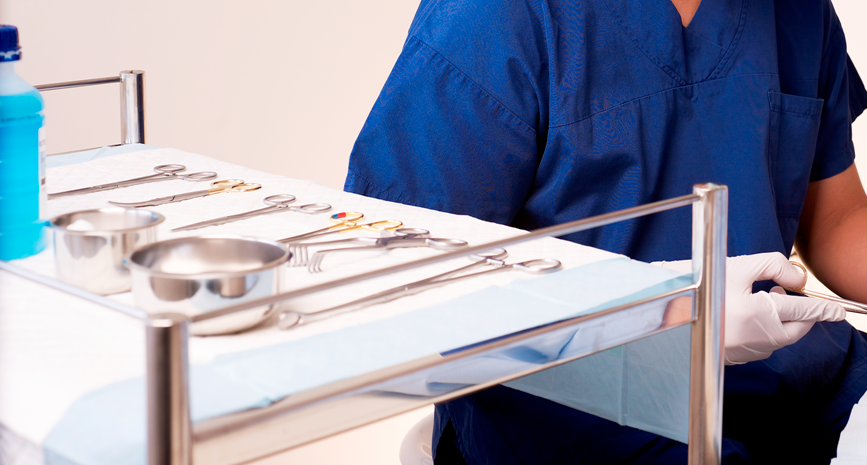
Dr. Sanjay Nalachandran is a qualified Vascular & General Surgeon. He performs a variety of surgery for vascular and common general surgical conditions and to compliment his practice, he has attended specialized courses in aesthetics.
- Conventional surgery for varicose veins
- Endoscopy services
- Laparoscopic procedures for hernia, appendicitis and gallbladder
- Stenting and angioplasty procedures for peripheral arterial disease
- Stenting for thoracic/abdominal aortic aneurysms
- Surgery for lumps/bumps
- Surgery for peripheral arterial disease ie bypass/endarterectomy
- Surgery for piles, haemorrhoids, anal fissures
- Surgery for renal dialysis
PILES
Piles or haemorrhoids are venous swellings of the anal cushions. The anal cushion is an area situated between the rectum and the anal opening. Piles can be graded by their position or their severity. They can be internal or external.
Piles can be distinguished by their severity:
Grade1: 1st degree piles are located inside the anal canal, they cannot be seen and may cause bleeding.
Grade2: 2nd degree piles have prolapsed outside the anal canal, they “hang- out” during bowel movements and spontaneously return into the anal canal after.
Grade 3: 3rd degree piles prolapsed during bowel movement and can only be “reduced” or returned into the anal canal manually.
Grade 4: 4th degree piles are permanently outside the anal canal. They are usually rather large , swollen and painful and may have clots in them.
Piles are caused by low-fibre diet, straining during bowel movements, constipation, pregnancy, age and are associated with a positive family history.
Piles can have various symptoms:
- Lump at the anus
- Itching
- Sensation of “incomplete” bowel movement
- Mucus discharge
- Bleeding
Treatment
Medical:
Lifestyle
- Increase fluid intake
- Avoid straining
- Daily bowel movement
- High fibre diet
Medication
- Fibre supplements eg Fybogel
- Stool softeners eg Lactulose
- Topical creams/suppositories
Non surgical:
- Banding/ ligation-Using an endoscope, “rubber” band is applied around the piles to “strangulate” and “shrink” it
- Sclerotherapy-injecting piles with a sclerosant to “shrink” it
Surgery:
- Conventional-The pile is excised and vessels ligated under general anaesthesia. The wounds are left to heal naturally.
- Stapler haemorrhoidectomy-Circular stapling device excises tissue above the piles. The piles are “pulled” back up the anal canal and “shrink” over time. Less pain, shorter hospital stay and shorter recovery period compared to the conventional method of surgery.
- Haemorrhoidal artery ligation-Using a Doppler, vessels supplying the piles are ligated using sutures.
GALLSTONES
The gallbladder is a sac located just beneath the liver. It stores bile which is produced by the liver, the bile is secreted into the intestines to aid in fat digestion. Gallstones arise when bile “hardens”. There are 2 types of gallstones, cholesterol and pigmented stones. Cholesterol stones are more common( ~80%) and are usually yellow whereas pigmented stones are usually dark and small.
Gallstones are more common in women( pregnancy, hormone replacement or birth control pills). Other risk factors of developing gallstones are age , family history, diabetes, cholesterol lowering drugs and high fat/cholesterol diet.
Gallstones can cause a variety of symptoms:
- Abdominal pain( usually right upper abdomen)
- Fever/chills
- Jaundice
- Dark urine/pale stool
The most sensitive and effective way of diagnosing gallstones is with an ultrasound scan. If gallstones have caused symptoms, then surgery is required. Many patients have gallstones that do not cause any symptoms, there are called “silent” gallstone and do not require treatment.
Surgery for gallstones is called Cholecystectomy. Nearly all are performed laparoscopically or using key-hole surgery nowadays. Using tiny incisions, the gallstones are removed together with the gallbladder. The gallbladder is a reservoir for bile, it is an organ that can be ‘removed’ without ill health. After removal of the gallbladder, the bile now flows directly from the liver to the intestines.
Recovery is usually 1 -3 days in hospital after which normal activity is resumed after 1 week.
If there is severe inflammation, scarring or infection of the gallbladder, key-hole surgery may not feasible and “open” surgery is required. This involves making an 5-6 inch incision over the right side of the abdomen and “removing” the gallbladder safely. Recovery is longer than the key- hole method due to pain from the incision. “Open” surgery is necessary in about 5-8% of all cholecystectomy operations.
Some possible complications that may occur are bile duct injury, bile leak, abscess formation, wound infection and bleeding.
HERNIAS
A hernia is an abnormal protrusion of a “structure” or organ through the cavity that normally contains it. Hernias can occur in any part of the body but the most common site is the abdominal wall. The organ or “structure” that usually protrudes through the abdominal wall is either intestines or fatty tissue.
There are numerous types of hernias:
- Inguinal :Most common type and is typically located at the groin crease.
- Femoral:More common in elderly females. It is also located at the groin and has a higher probability of “strangulating”
- Epigastric: Located in the midline, between the navel and the “chest bone”, at the rectus muscle. It usually contains fatty tissue and not intestines.
- Umbilical hernia: Located at the navel, most are noted at birth but some occur later in life.
- Incisional hernia: Located at the previous site of surgery. The previous surgery creates a weakness in the abdominal wall which a hernia develops. It occurs in about 2-10% of all abdominal surgeries.
Risk factors and symptoms:
Hernias can be caused by conditions that increase the abdominal pressure. For example, constipation, obesity, chronic cough, staining during bowel movements and lifting heavy objects.
Hernias generally present as lumps, these lumps may get bigger with time. They are said to be “reducible” if the lump can be “pushed” back into it’s normal cavity.
When the hernias are painful and cannot be “reduced” or “pushed back”, they are referred to as “irreducible”. In this situation, the blood supply to the hernia contents may be “cut-off” and it is said to be “incarcerated”. This condition is a surgical emergency.
Treatment
Conventional repair-The abnormal” protrusion” is pushed back into it’s cavity and the defect in the abdominal wall is closed with sutures. This operation may cause some “tension” in the repair.
Mesh repair-Most common technique using a “tension free” mesh. The mesh is sutured or placed to re-enforce the defect in the abdominal wall. It has less pain and recurrences when compared to the conventional method.
Laparoscopic repair-Small incisions are made and the mesh is inserted to re-enforce the defect. This method avoids large incisions and is cosmetically better. Laparoscopic repair is more suited for bilateral inguinal hernias or recurrent hernias.
AESTHETIC SERVICES
- Botox injections
- Filler injections
- Skin photorejuvenation
- Treatment for excessive sweating
- Hair Removal :
Laser is the latest technique in hair removal/reduction treatment. The laser targets each hair follicle and causes the destruction of the follicle. Hair growth cycle has 3 phases. Anagen phase( growth), Catagen phase( transitional) and Telogen phase ( resting).
The laser treatment works best when the hair follicle is in the growth phase. Hair removal is safe, effective, has no downtime and is almost painless. Laser hair removal can be performed on any body area including the armpits, legs, back, face and neck.
Mulitple sessions are usually required to achieve optimum results. The treatments are performed 4 to 6 weeks apart and most patients require between 4 to 6 sessions.
After several sessions/treatments, most patients will observe that the hair growth is less and the hair itself is finer.

